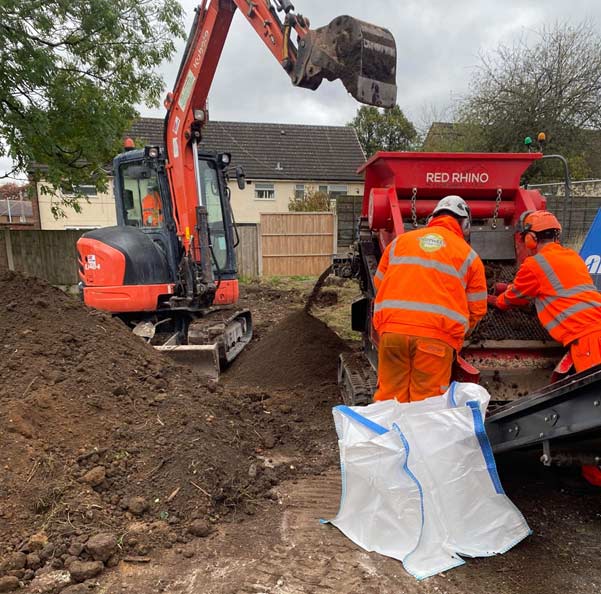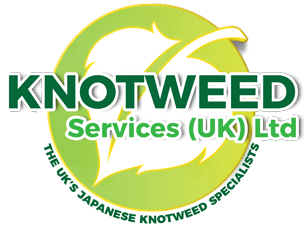JAPANESE KNOTWEED REMOVAL Shifnal
2
LIVE KNOTWEED JOBS IN Shifnal
5
SUCCESSFUL KNOTWEED REMOVAL PROJECTS IN Shifnal
100%
SUCCESSFUL PROPERTY SALES AFTER TREATMENT
1
Shifnal BASED KNOTWEED STAFF
NO OTHER JAPANESE KNOTWEED COMPANIES IN Shifnal HAVE OUR TRACK RECORD
Knotweed services is a highly professional company with years of experience which specialise in Japanese knotweed removal, control, and treatment for properties located in or around Shifnal.
Knotweed Services is a member of the PCA, a government-approved trade body for “the damp, waterproofing, wood preservation and invasive weeds industries.” We can be trusted to deliver effective methods for Japanese knotweed removal.
Knotweed Services has successfully controlled many large knotweed infestations in and around Shifnal and England. For effective knotweed control to occur, thorough identification, surveying, treatment, and monitoring are necessary.
The Truth About Japanese Knotweed
Homeowners, investors, and commercial property owners are affected by Japanese knotweed. If you’re a home owner, your lender probably won’t lend against a property with an infestation.
If Japanese Knotweed is on your commercial land or property, projects on that land may be delayed until you deal with the infestation correctly and legally.
Japanese Knotweed, a very troublesome weed
- Japanese Knotweed can grow through tarmac and concrete, which poses a threat to the structure of your building or property.
- Mortgage lenders often refuse to lend against a building where Japanese Knotweed is present.
- Knotweed clogs roads and other pathways, obstructing traffic and access to buildings and other structures. The dense root systems of this invasive plant make it a major hassle for commercial property owners.
Knotweed services provides solutions to the knotweed removal, treatment and disposal needs of customers in Shifnal. Our knotweed treatment ensures complete eradication of the weed, backed by an insurance-backed guarantee against re-emergence.



FREE IDENTIFICATION
Fill in the form below, attach your pictures and we’ll let you know if the plant in your picture is Japanese Knotweed.
Call our experts ASAP to undertake the treatment and control of your knotweed problem in Shifnal
Call us on: 0121 725 6348 or 0800 689 4146 for an immediate idea on cost
Knotweed Services is here to help you.
RESIDENTIAL JAPANESE KNOTWEED REMOVAL Shifnal.
WHAT YOU NEED TO KNOW ABOUT JAPANESE KNOTWEED REMOVAL Shifnal
As Japanese knotweed infestations differ from property to property, it’s not surprising that treatment and control methods will too. It may be necessary to use one method of Japanese knotweed removal, treatment and control or a combination of different knotweed removal methods.
We take a scientific approach to weed control. Our weed specialists examine a site’s specific factors to determine the type of treatments that will give the best results. We guarantee all our work.
— JAPANESE KNOTWEED REMOVAL OPTIONS AVAILABLE IN Shifnal

FOLIAR SPRAYING *
The most common treatment for Japanese knotweed is the spraying of powerful chemicals with a knapsack sprayer. We ensure that other plants are not damaged. The most effective time for foliar spraying to Japanese knotweed is in spring.

FOLIAR LEAF WIPING *
With this treatment for Japanese knotweed, we use a tool to “physically wipe” our chemicals onto the plant’s leaves. Because of the accuracy of this application, we frequently allow a higher chemical concentration.

STEM INJECTION
We apply a controlled amount of herbicide directly into the invasive weed. Due to being injected directly into the Japanese Knotweed, this is the most crafty method of removal. It isn’t dependent on the weather.

BIOMASS REDUCTION
Biomass is a form of excavation and removal but instead of extracting all of the soil impacted by Japanese Knotweed, we only remove the infested parts of the soil. It’s an excellent Japanese Knotweed control method that allows the reuse of the soil. Reducing the use of landfill.

CROWN REMOVAL
Removing the crown and stem from the equation is an excellent method since they can regenerate, and even small pieces of chopped crown or stem can regenerate and become a new invasive weed.
— COMMERCIAL TREATMENT OPTIONS AVAILABLE IN Shifnal

SOIL SCREENING
An effective technique utilised on hundreds of locations around the UK
The Japanese knotweed rhizome material is removed from the soil material using the screening procedure. The Japanese knotweed waste is then either burned on site with a D6 exemption from the Environment Agency or Natural Resources Wales, or it is transferred to a licenced landfill at a far reduced disposal rate.
After being cleaned, the soils can be used elsewhere, typically in soft landscaping areas where they won’t obstruct construction.
Due to fewer truck travels to the landfill, this can dramatically save landfill and backfill expenses while also assisting in lowering the carbon impact on the property.

BIOSECURITY SUPERVISION
Knotweed Services can provide a biosecurity operative to supervise any excavations and movement of soils containing Japanese knotweed on site.
As part of these measures, we can provide a biosecurity boot wash and machine-washing area installed in an area at the entrance to the site.
We will provide all toolbox talks for the main contractor on site, which will be signed by all contractors involved in the operation on site.
We can provide temporary geotextile barriers if required in areas to maintain the biosecurity on site.
Once the works have been completed, we will provide the client with a full biosecurity report.
This method can be used in conjunction with other treatment methods on site.

EXCAVATION AND DISPOSAL
This treatment method is ideal where time constraints are present and there’s no other option other than to remove both the Japanese Knotweed and contaminated soil to a registered landfill.
By removing all traces of the infestation quickly, this offers a rapid solution to your problem and allows your commercial project to begin groundwork’s almost straight away. When time is of the essence, there is no quicker Japanese Knotweed removal/treatment method.
Any waste taken off-site will be done so with a licensed waste carrier to a suitably authorised landfill site.

CELL BURIAL
Cell burial comprises of moving Knotweed contaminated soil from one location on site, burying it in an excavated pit which is lined with a root barrier membrane, in a different position on the site.
The burial requirements for Japanese Knotweed are as follows:
- The Environment Agency recommends that the top of the burial cell should be a minimum of 2 metres below ground level.
- The overall depth of the burial pit should be in excess of 5 metres deep. All root barrier seams are welded together forming an encapsulated cell from which the Japanese Knotweed cannot escape. Clean soil is then used to backfill on top of the cell.
- To prevent accidental disturbance of the burial site, it is recorded on all site plans and future land owners should be made aware of the location.

STOCKPILE & TREAT
Bunding is the method of relocating contaminated Japanese Knotweed soil to a different area of the site being treated. A bund is a shallow area of the contaminated soil, typically 0.5m deep.
The purpose of the bund is to move the Japanese Knotweed to an area of the site that is not used. This ‘buys time’ for treatment that would not be possible where the Japanese Knotweed was originally located.
To make the surface flush with the surroundings, the bund can either be lifted, placed on top of the land, or positioned inside an excavation.
For the surface of the bund to be flush with the surroundings, it can be raised, placed on top of the ground, or positioned inside an excavation.

HERBICIDE APPLICATION
At Knotweed Services we can provide the client with bespoke treatment plans depending on the locations of the Japanese knotweed.
These plans can work in conjunction with other methods of treatment where access is limited to pedestrian movements i.e., embankments or existing pathways within a site.
This will normally consist of up to 3 visits per annum to apply herbicide by either foliar spray technique or stem injection during the growing season over a period of 3 years, with a monitoring period of 2 years thereafter.
We would select the appropriate herbicides depending on the surrounding foliage or environmental constraints.
After each visit a full treatment record would be provided with photos showing the progress of the works and then an annual report.
